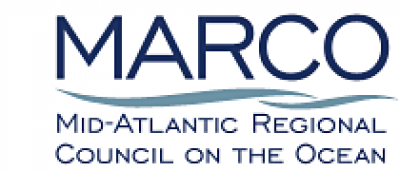U.S. Mid-Atlantic: Planning for multiple needs along a densely developed shore

Screenshot from the Mid-Atlantic Regional Ocean Assessment.
Posted by
Rachel GreggProject Summary
The National Ocean Policy requires federal agencies to work in a more coordinated, goal-oriented framework with states, tribes, and stakeholders in the form of Regional Planning Bodies (RPBs). The Mid-Atlantic RPB (MidA RPB) was formally established in April 2013 and includes federal, tribal, state, and other representatives from New York, New Jersey, Pennsylvania, Delaware, Maryland, and Virginia. The planning process included extensive stakeholder engagement in order to adequately reflect the economic, social, cultural, and ecological needs and goals of the region. The vision of the MidA RPB is to create a region where responsible use and stewardship support healthy, resilient, and sustainable ocean resources. The Mid-Atlantic Regional Ocean Assessment was developed to support the regional planning process and provides key information on the regional ocean system, including details on how climate change and ocean acidification affect species and habitats. The Mid-Atlantic Regional Ocean Planning Framework outlines the vision, geographic focus, proposed goals, principles, objectives, and example actions for ocean planning in Mid-Atlantic region. This guidance document informed the creation of an Ocean Action Plan, which was released in November 2016.
The plan acknowledges that existing uses of ocean resources and space may increasingly come into conflict as climate change manifests and populations increase. For example, fishermen are contending with acidifying oceans and increasing water temperatures, in addition to more competition for access to fishing grounds in the Atlantic. The plan identifies two specific actions that address climate change:
- Documenting spatial shifts in ocean habitats and species by generating methods and data to create maps illustrating historic, current, and projected changes, and supporting their subsequent incorporation into management priorities; and
- Developing a regional Ocean Acidification Monitoring Network to improve understanding of the effects of acidification on ocean habitats and species and facilitate a coordinated regional approach to managing these impacts.
Information on ocean resources and human uses in the region is consolidated on the Mid-Atlantic Ocean Data Portal, which serves as an online toolkit and resource center for interested groups.
Citation
Morgan, M. & K. Thompson. 2017. U.S. Mid-Atlantic: Planning for multiple needs along a densely developed shore. Summary of a project of the Mid-Altantic Regional Planning Body. Retrieved from CAKE: www.cakex.org/case-studies/us-mid-atlantic-planning-multiple-needs-alon… (Last updated February 2017)
